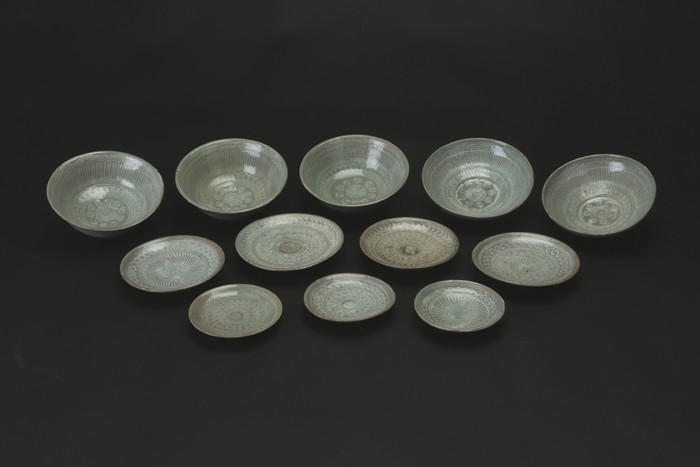An ancient vessel excavated near Mado Island in the waters off Taean-gun County in Chungcheongnam-do Province (South Chungcheong Province) has turned out to be a jounseon (조운선, 漕運船), a type of ship that delivered grain during Joseon times (1392-1910).
The ancient vessel, named Mado No. 4, can be identified as a jounseon due to many factors, including the wooden pieces that are inscribed with “Gwangheungchang,” the grayish-blue powdered celadons that are marked “Naeseom” and due to the overall structure of the ship, said the National Research Institute of Maritime Cultural Heritage, part of the Cultural Heritage Administration (CHA), on Aug. 26.
Jounseon vessels were used to deliver rice collected as tax by the government to grain storage sites in Seoul.

The Mado No. 4 ship is submerged in waters off Taean-gun County in Chungcheongnam-do Province.
A total of 13 ancient ships have been found so far, in addition to Mado No. 4. Ten of them are from Goryeo times (918-1392) and two are Chinese ships from the 13th or 14th century. One is from the Unified Silla period (676-935). There are records that say that numerous ships sank near Mado Island during Joseon times, but this is the first time that a ship from that period has been excavated. The ship is 13 meters long, 5 meters wide and 2 meters deep.

Wooden pieces are marked ‘Naju Gwangheungchang.’ The latter indicates the destination and the former is the departure point.
Researchers found 60 wooden pieces and most of them show Naju as the goods’ destination and Gwangheungchang as their departure point. It is believed that the ship collected grain or other goods offered to the government in Naju and shipped them to the Gwangheungchang, a state agency that managed wages for government officials. Researchers have concluded that the vessel must have been a jounseon ship from early Joseon times, considering the fact that it was shipping offerings to the Gwangheungchang, a government agency. Some wooden pieces found in the vessel show du (두, 斗) or bori (보리, 麥), units that were used to measure an amount and which distinguish different types of grain.

Grayish-blue powdered celadon is found onboard the Mado No. 4.

A piece of grayish-blue powdered celadon is marked naeseom, which indicates the Naeseomsi, the procurement department that managed supplies for Joseon’s royal court.
Some grayish-blue powdered celadon plates and bowls were found onboard the ship, and three of them are marked naeseom (내섬, 內贍), which indicates the Naeseomsi, the procurement department that managed supplies for Joseon’s royal court. It is believed that the Joseon government started inscribing naeseom on its porcelain in 1417, the 17th year of King Taejong’s reign.
Looking at the chrysanthemum and straw rope patterns inscribed on the porcelain and the way in which the patterns are laid out in the center, it is presumed that the porcelain was produced in the early 15th century. Researchers said the ship sank sometime between 1410 and 1420 while sailing with its cargo.
By Limb Jae-un
Korea.net Staff Writer
Photos courtesy of the Cultural Heritage Administration
jun2@korea.kr























